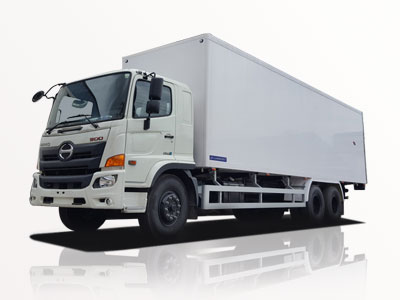Introduction
The 2006 Peterbilt 335 is a versatile and rugged medium-duty truck that has carved a niche for itself in various industries, from local delivery to construction. This article delves deep into the specifics of the 2006 Peterbilt 335, highlighting its performance, specifications, and practical applications. We will explore its features, advantages, and maintenance tips, ensuring that both potential buyers and current owners are well-equipped with knowledge about this outstanding vehicle.
Overview of the 2006 Peterbilt 335
The Peterbilt 335 combines the durability and reliability expected from the brand with a smooth ride and excellent handling. Built to meet the demands of urban applications, it is particularly favored for its customizable options suited to various needs, such as cargo handling and towing capabilities.
Key Specifications
| Specification | Details |
|---|---|
| Engine Options | CAT C7 or Cummins ISC |
| Horsepower | 200 to 260 HP |
| GVWR | 33,000 lbs |
| Transmission | Allison 2000HS or Manual Options |
| Wheelbase | Engines vary with options: typically 236 to 273 inches |
Design and Comfort
Cab Configuration and Features
The 2006 Peterbilt 335 is available in multiple cab configurations, including standard day cab and extended cab models. The interior is designed with driver comfort in mind, featuring ergonomic seats, ample storage compartments, and intuitive dashboard controls.
Visibility and Safety Features
Visibility is a crucial aspect of truck design, and the 2006 Peterbilt 335 excels in this area. With large windows and optimal mirror placements, drivers can easily navigate tight spaces and heavy traffic. Additionally, safety features such as anti-lock braking systems (ABS) and optional lane departure warning systems enhance overall safety.
Performance and Efficiency
Engine Performance
The engine options for the 2006 Peterbilt 335, including the CAT C7 and Cummins ISC, provide a strong balance of power and fuel efficiency. Depending on the configurations, drivers can expect decent fuel mileage relative to other medium-duty trucks in the same class.
Driving Experience
With responsive steering and a robust suspension system, the 2006 Peterbilt 335 offers a smooth driving experience. Users report that the truck handles well under various load conditions, making it suitable for both short-haul and long-haul operations.
Customization and Configurations
Body Types and Applications
One of the standout features of the 2006 Peterbilt 335 is its adaptability. The truck can be fitted with various body types, such as:
- Box trucks for local delivery
- Flatbeds for heavy equipment transport
- Service bodies for utility and maintenance work
Aftermarket Upgrades
Many owners opt for aftermarket upgrades to enhance performance or tailor the truck to specific tasks. Common upgrades include:
- Enhanced suspension systems for better load handling
- GPS and advanced navigation systems
- Additional storage solutions for tools and equipment
Maintenance Tips for the 2006 Peterbilt 335
Regular Servicing
To ensure a long lifespan for the 2006 Peterbilt 335, regular maintenance is critical. Recommended service intervals include:
- Oil Changes: Every 5,000 to 7,500 miles
- Transmission fluid changes: Every 30,000 miles
- Brake inspections: Every 10,000 miles
Common Issues and Solutions
Like any vehicle, the 2006 Peterbilt 335 can experience issues. Here are some common problems and potential solutions:
- Issue: Fuel efficiency declining
Solution: Check for clogged filters or injectors. - Issue: Transmission slipping
Solution: Ensure fluid levels are adequate and schedule a transmission check.
Real-World Examples of the 2006 Peterbilt 335
Case Study: Local Delivery Services
A local delivery service operating a fleet of 2006 Peterbilt 335 trucks reports excellent performance in urban settings. The trucks’ maneuverability, combined with their capacity to handle heavy loads, makes them ideal for city deliveries. Average fuel consumption has been recorded at 10-12 miles per gallon, competitive for their segment.
Case Study: Construction Industry Utilization
In a construction setting, the 2006 Peterbilt 335 has been favored for its ability to transport tools and materials to job sites. Construction companies have successfully utilized flatbed configurations to haul equipment while customizing the interior to store tools efficiently.
Cost of Ownership
Purchase Price and Financing Options
As of 2023, the price for a used 2006 Peterbilt 335 can range from $30,000 to $50,000 depending on the condition, mileage, and configuration. Various financing options are available, including loans for commercial vehicles and leasing agreements designed for businesses.
Insurance and Running Costs
Insurance costs for a 2006 Peterbilt 335 typically range from $1,200 to $2,500 annually depending on the coverage level and business needs. Running costs include fuel, maintenance, and unexpected repairs, with a total average monthly expense around $1,200 for an efficiently managed vehicle.
FAQs
1. What is the typical lifespan of a 2006 Peterbilt 335?
With proper maintenance, a 2006 Peterbilt 335 can last anywhere from 15 to 20 years, depending on usage and care.
2. How does the Peterbilt 335 compare to other medium-duty trucks?
The Peterbilt 335 is often praised for its driver comfort, visibility, and customization options, making it a strong contender in its category when compared to competitors.
3. Can the 2006 Peterbilt 335 be converted for alternative fuels?
While primarily designed for diesel engines, various aftermarket companies offer conversion kits to allow for propane or compressed natural gas, expanding its utility.
4. What are the common upgrades for the 2006 Peterbilt 335?
Common upgrades include performance chips for the engine, improved suspension kits, and enhanced navigation systems.
5. Is the 2006 Peterbilt 335 suitable for long-haul trucking?
While designed primarily for medium-duty applications, some operators have successfully used it for long-haul trucking with appropriate modifications for comfort and cargo capacity.
6. What should buyers look for when purchasing a used 2006 Peterbilt 335?
Buyers should inspect the vehicle for service history, overall wear and tear, mileage, and check for any maintenance records to ensure they are making a wise investment.





